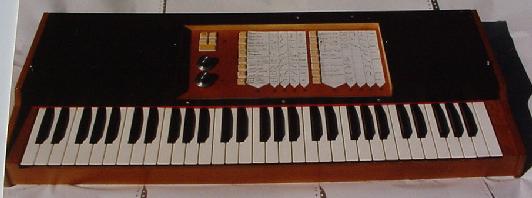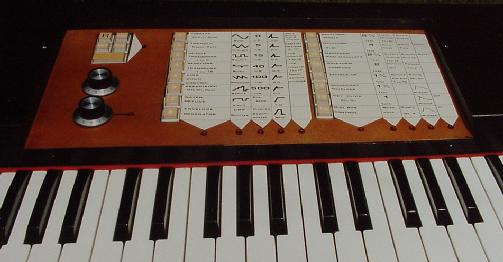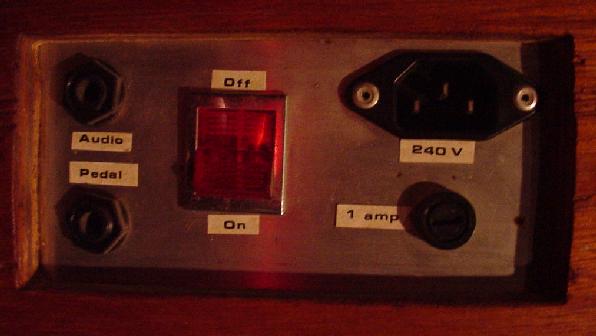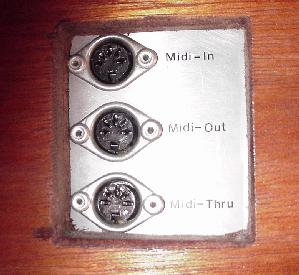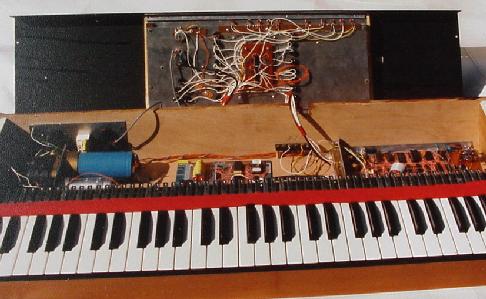Digipoly
|
Digipoly was an 8 voice polyphonic keyboard synthesiser designed in 1983. It used entirely digitial synthesis and it was a contemporary of the 'groundbreaking' Yamaha DX7, which also claimed entirely digital synthesis. Digipoly had an intelligent automatic arpegiator mode that would still be considered good today. Actually, the Digipoly was not entirely digital, because master tune, vibrato and tremolo were implemented by respective analog modulation of the master digital clock and the DAC reference voltage. |
|
The front panel used a system of sixteen menus to access the internal functions and to provide a facility to load and save programs to 16 ram slots. Sub-menus were accessed below some of the menus, with an LED indicating which column of ledgends was active at any one time. For instance, for the envelope shapers, one could set attack, decay, sustain and release. A number of digital parameters could be set with the multi-purpose analog 'knob' and stored as part of the program. The other knob is the output level control. |
|
The rear panel has the mains input and the mono audio output. Also, the sustain pedal plugs in here. |
|
MIDI was very posh and brand new when Digipoly was designed and having created this implementation I was sought for consultancy for years to come. |
|
Internally, Digipoly used an Intel 8088 processor to control all functions and a `TTL processsor' as the voice generator. These are shown center and right. The power supply is at the left. |
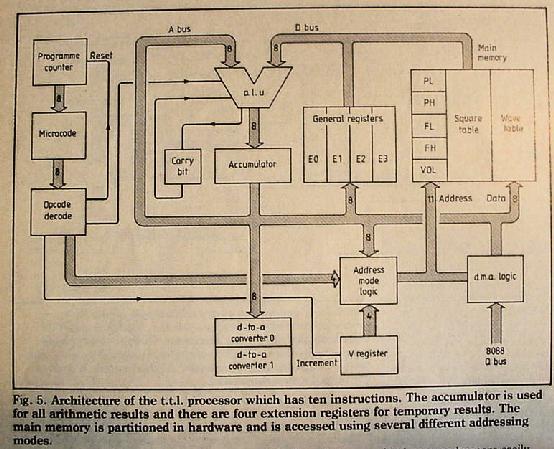
|
The TTL processor had quite a good instruction set and architecture. It executed the same program eight times in succession using different register banks, before starting again, giving a DAC sample rate of about 20 kHz. Instead of having a multiply instruction, the quarter squares method was used, whereby a lookup table of the square function is used to multiply with the following identity: 2ab = (a+b).(a+b)-a.a-b.b. The PCM waveforms were stored in the 8088 eprom and copied into the TTL processor's RAM as needed. |
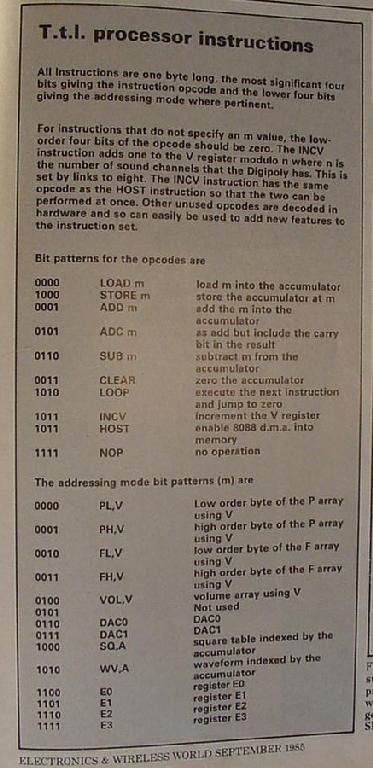
|
The design was published in Wireless World over five consecutive months. PDF. (C) DJ Greaves. 1985. |
